The state of Historic Vineyard Society growths in 2025
Thoughts on place and authenticity, crystallized in wines shown at HVS In the City

This is a public post of The Wine Clarion, which is still in a recruiting stage. In the future, most posts will be by paid prescription. If you are a free subscriber you need not do anything to continue receiving upcoming public posts. If you wish to enjoy all my future calls for increased appreciation of more authentic, handcraft wines (and fewer fake or fatuous ones), please consider changing your subscription status by clicking the link below. Best as always, R.C.!
At the Historic Vineyard Society In the City tasting in San Francisco this past May 10, 2025, 42 wineries or brands presented a surprising variety of wines (not just Zinfandel!) sourced from some 65 vineyards certified by the non-profit organization known as the Historic Vineyard Society (a.k.a., HVS). It was like “history” in the making. Let me explain…
Since its founding in 2011, HVS has been fighting a seemingly uphill battle to preserve the state’s most historic vineyards. Sites going into wines more widely known, in the commercial wine world, as “Old Vine" wines.
Although the term Old Vine can be found on many wine labels—especially on bottlings of Zinfandel—HVS has a stringent definition of what constitutes a historic site. To qualify for HVS certification, a vineyard submitted to the registry must be
• A currently producing California wine vineyard.
• Its original planting date must go back a minimum of 50 years (as of 2025, grapevines planted before 1975).
• At least 1/3 of the vineyard’s currently existing producing vines must be traceable to the original planting date.
Vineyard owners may submit their properties to HVS for certification by demonstrating substantiable proof of their history. Over the past 14 years, 190 vineyards have been recognized as a Historic Vineyard. Over the past few years three of those vineyards have been removed from the list because they have since been removed... from the ground—the very reason why HVS exists, which is to prevent further loss of historic vineyards.
As a consumer, you are less likely to find a bottling of HVS certified wine under a label that says “Old Vine” on the front label. Instead, almost all wines of this stature bear the names of their respective vineyard sources (i.e., vineyard-designate or single-vineyard labeled wines), without the word “old” found in the wording. At this level, it is the name of the vineyard that speaks to a wine's status.
For instance, among the Lodi producers showing at the 2025 HVS tasting in San Francisco, St. Amant Winery presented two Zinfandels, a “Mohr-Fry Ranches” and a “Marian’s Vineyard.” The latter is also identified as a “Reserve Zinfandel.” Neither wine, however, is identified as “Old Vine.” What matters is the vineyard.
Over the years, aficionados of St. Amant wines have also come to expect some very specific sensory profiles out of these vineyard-designated bottlings. Both are among the most celebrated in the state (Marian’s Vineyard, in fact, was recently named the 2025 Vineyard of the Year by the California State Fair).
Sandlands—a brand with a devoted following, owned and operated by Tegan Passalacqua—is even more ambiguous in its labeling. The Sandlands Cinsaut, sourced from Bechthold Vineyard, which is probably the oldest stand of Cinsaut (planted in 1886) in the world, simply says “Lodi Cinsault” on its front label, with no identification of its vineyard source. If you are a connoisseur of the wine, however, you already know exactly where it’s from, and how it tastes, the same way you already know what to expect out of Lafite or Margaux.
Perhaps the most popular of the Sandlands wines (many believe it is Passalacqua’s finest wine) is one labeled, simply, “Lodi Red Table Wine.” It bears the names of neither any vineyard nor grape variety because it is a 1/3-each blend of Zinfandel, Carignan and Cinsaut. The Zinfandel comes from Passalacqua’s Kirschenmann Vineyard (planted in 1915), the Carignan from Spenker Ranch (dating back to 1900), and the Cinsaut from the 1886 Bechthold growth. Extremely old, and historic, vines indeed. Tasting (not hype, nor excessive detail) can be believing.
Out of the 120 or so wines poured at the 2025 HVS event “In the City,” practically every one that I managed to taste stood out for the very reason why the Historic Vineyard Society exists in the first place: To celebrate individual vineyards; especially those with long, heroic histories. The older the vineyards, the more likely they are to produce wines that express their origin or “sense of place,” not just the characteristics of the grapes from which they are made.
This is exactly why you want to preserve old growths. Because you want the world to continue to appreciate the unique tastes of the wines coming from these vineyards. Something worth fighting for!
Individual wineries or winemakers, of course, exert a huge impact on sensory profiles of wines, even those made from old, historic sites. But it is also no coincidence that over 90% of the time, wines made from vineyards such as those on the HVS list tend to be crafted in minimal intervention styles—something often identified as “natural” these days, whether or not these producers even like the use of the word.
Fact of the matter, though, is the less that is done to a wine in a winery, the more likely it is to taste like the vineyard it comes from. Since the purpose of “saving” a historic site is to identify and celebrate it, it simply makes sense to turn it into wines that taste as much as possible like a wine that could only come from that site.
You do not, for instance, want a Marian’s Vineyard Zinfandel to taste every other Zinfandels out on the mass market. What would be the point? Therefore, you utilize minimal intervention methods to preserve the character of the vineyard in the bottle, as pristinely as possible, for the same reason why you want to preserve the vineyard’s very existence in the ground.
Hence, you can say that another hugely positive impact of an organization such as Historic Vineyard Society is that it fosters low intervention winemaking (to me, at least, a good thing). You can also say, of course, that the growth of low intervention winemaking itself has been a major factor driving the Historic Vineyard Society. The relationship has undoubtedly been a reciprocal, only enriching the American wine industry in general.

I did not taste all the wines presented at the 2025 HVS event, but I did manage to collect thoughts on quite a few of the more impressive ones. From my notes...
2023 Âmevive, Ibarra-Young Vineyard, Los Olivos District Marsanne—A tiny block of this grape originally planted in 1973 and leased for many years by Qupé’s Bob Lindquist, for whom Marsanne was a signature varietal. Since 2020, farmed by Âmevive’s Alice Anderson, who continues to farm the block biodynamically and vinify the wine with a contemporary sense of restraint, to amazing effect—wild flower fragrances billowing from the glass with undertones of mineral and spices, crisp, light (12.8% ABV), airy, sprightly, thoroughly refreshing.
2023 Âmevive, Ibarra-Young Vineyard, Los Olivos District Périphérie—Extremely clever use of a tiny section of this HVS certified vineyard first planted in 1973 to Marsanne, Syrah and Mourvèdre; field picked and native yeast co-fermented to fashion a transparent red-veering-on-white wine with a white wine acid zip and florality combined with a mildly toothsome fleshiness and earthy spice of the two black skinned grapes, yet still landing on the palate with an airy freshness and lightness.
2023 Âmevive, Ibarra-Young Vineyard, Los Olivos District Mourvèdre—From a half-acre block of own-rooted Mourvèdre dating back to 1971. A gorgeous rendering of the grape, intense and meaty yet bright, upbeat and svelte, with moderate weight (12.8% ABV), mercifully unburdened by oak (strictly neutral French oak), just mildly grippy despite a perceptible core of tannin.
2023 Âmevive, Ibarra-Young Vineyard, Los Olivos District Syrah—The third major component of this tiny block of Rhône grapes planted in 1971 sourced by Qupé for several decades, now yielding a more flowery/violet-like style of the varietal; silken, zesty, marvelously understated yet with quite a bit of snap, crackle and pop. Best of all for me, emphatically delicate by nearly any American standard.
2023 Birichino, Wirz Vineyard, Cienega Valley Riesling—There were no less than four bottlings of Riesling at the 2025 HVS tasting “In the City” sourced from this very same vineyard, said to have been planted in the 1960s and still producing exceptional, albeit extremely meager (averaging 1 ton/acre), fruit that is flowery and distinctive in its petroleum laced stone fruitiness, no matter how dry and bright with acidity. In the low intervention style of this brand, producing a beautifully unsullied, uniquely Californian (in almost an old school, ‘60s/‘70ish way) rendering of the grape.
2023 Birichino, Bechthold Vineyard, Lodi Cinsault—Fragrantly scented, rounded red berry/strawberry fruit with a smidgen of earthiness; rounded, zesty light-medium body, compellingly deep yet with an ease of drinkability.
2023 Birichino, Besson Vineyard, Central Coast Grenache—A vineyard dated by HVS to somewhere in the 1910s, consisting almost entirely of Grenache interspersed with an odd Zinfandel plant or two. The nose carries notably earthy tones, while the unfettered red fruited qualities of the grape emerge in the mid-palate with a bright, mildly zesty lift.
2023 Birichino, Enz Vineyard, Lime Kiln Valley Mourvèdre—Own-rooted vines originally planted in 1923, still consistently producing upbeat, fleshy wines infused with an earthy minerality, solid as a rock, long, savory, forthright and transparent in its unique sense of place.
2021 Corison, Kronos Vineyard, St. Helena-Napa Valley Cabernet Sauvignon—Almost since the day this vineyard, fortuitously planted on St. George rootstock in 1971, was acquired by Cathy Corison in 1995, this bottling has served as a rallying cry for Cabernet enthusiasts pining for the “old school” profiles entailing lighter weight, an unfashionably green herbiness and decidedly restrained fruitiness. The ’21 fulfills the diehards’ wishes, slapping the senses with distinctly earthy, cedary qualities followed by a lean and edgy palate-feel. Kudos to Corison—present at this event with her daughter/assistant winemaker Grace Corison Martin—for keeping the faith by sticking to her guns.
2024 Emme Wines, “amando el sol,” Ricetti Vineyard, Redwood Valley Colombard—From a vineyard dating back to the 1940s, white wines like this makes you wonder why or how grapes such as Colombard (admittedly, once utilized primarily for its fit in cheap generic wines) ever fell out of fashion. The profile is very contemporary in terms of how it puts minerality in front of fruitiness, and while acid driven, the feel is light (11.5% ABV), refreshingly restrained and compelling in its sense of purity.
2024 Emme Wines, “pink lemonade,” Ricetti Vineyard, Redwood Valley Field Blend—A transparently pinkish red co-fermentation of two field blend: The first consisting of Abouriou (a grape once known in California as Early Burgundy), Zinfandel and Colombard, and the second a carbonic maceration of Valdigué (once known as Napa Gamay), Carignan and Colombard. The result is ultra-bright, perky, light in feel and brimming with floral red fruit; something that could be described as Beaujolais-ish if not for a somewhat wild and uncouth presence of tannin at the core, giving the wine a semblance of a grip, although you could also say the faintly animal-like quality is, indeed, somewhat “pink lemonade” in what comes across like a citrus skin earthiness (similar to the smell on your fingers after you peel a lemon).
2023 Emme Wines, “for you, anything,” Ricetti Vineyard, Redwood Valley Carignan—Despite the whimsical names and labels employed by this brand, aficionados of Southern French grapes find it very easy to take wines like this very seriously. The red fruit scented Carignan profile is bright, pure, laser focused, suitably earth toned and almost unexpectedly spice inundated, while grounded in the grape’s tart edged, modestly phenolic palate-feel.
2022 Fest Wine Co., van der Kamp Vineyard, Sonoma Mountain Pinot Noir—1.8 of the 25 acres of grapes in this hillside vineyard consists of St. George-rooted Pinot noir planted in 1952; effectively, California’s oldest continuously farmed planting of this noble variety. The sneaky allure of these stubbornly enduring plants is not just their physical longevity, but also the wines intrinsic to its genes: Uncommonly fine, silky, light, gentle, with as much mineral as spice in its flower petal profile; almost plain, or naked, in its rosebud-like delicacy. Wines like this would never, could never set off bells and whistles in numerical rags. Then again, that is exactly why I love it.
2023 Fine Disregard Wine Co., Chalone Vineyard, Monterey County Chenin Blanc—While modeled after high acid, austere, bone dry iterations of this cultivar, it is also the sheer age and unlikely survival of these grapevines, dating back to 1919, that add to this wine’s tangible mystique: Pungent minerality mingling with wildflower and characteristic honey, lingering long and lacy on the palate with a degree of fruit/acid harmony that is, frankly, freakish in comparison to virtually all other California grown Chenin Blancs, which typically struggle to merge these sensations.
2022 Fine Disregard Wine Co., “Los Parajes” Lodi Carignan (Mule Plane Vineyard and Spenker Ranch)—Rich, fragrant, sumptuous blend of two of Lodi’s oldest Carignan growths (the 1900 Spenker Ranch with Mule Plane’s late 1920s block); silky/zesty juxtaposition driving a long finish of crushed red berries and faint loamy earthiness. Although there are other vintners sourcing wines from both these historic sites, it is interesting that Fine Disregard owner/winemaker Mike Schieffer believes the two vineyards are better together, as opposed to wines bottled separately as vineyard-designates, and this bottling may be proof of that!
2023 I. Brand & Family, Massa Vineyard, Carmel Valley Chenin Blanc—Fascinating retro-feeling wine sourced from a Monterey vineyard originally known as Durney, first planted during the ‘70s; the flowery, honeyed varietal character is tinged with pronounced notes of wild herbs verging on sagebrush-like chaparral; mildly crisp and dry on the palate.
2022 Limerick Lane Cellars, “Marquis” Sonoma County Zinfandel (Limerick Lane, Banfield, Maffei, Monte Rosso and Bedrock Vineyards)—A blend of five heritage vineyards adding up to a harmonious, or you could say symphonic or melodious, rendering of the Sonoma style—intense and puristic in the black/blue/red berry varietal fruit, layered, buoyant, lively in acidity, sturdy yet unburdened by undue tannin or oak. Unusual in that it is not so much focused on a branded style (which most commercial Zinfandels blended from multiple vineyards do) than to a honest acquiescence to regionally defined terroir. Bravo.
2022 Limerick Lane Cellars, “1910 Block” Limerick Lane Estate, Russian River Valley Zinfandel—Classic co-fermented “mixed blacks” block (Zinfandel mixed with Peloursin, Negrette, Alicante Bouschet, Syrah and Petite Sirah) planted, as the name infers, in 1910. Solid as a proverbial block in unrepentantly jammy black fruit tinged with black cherry and peppery spice, bolstered by as much acidity as sturdy tannin, yet gloriously effusive in its perfume, compelling at this stage suggesting something of a well spent youth.
2022 Limerick Lane Cellars, Monte Rosso Vineyard, Moon Mountain District Zinfandel—The mystique of this vineyard—Zinfandel first planted in 1886 on slopes about 1,300-ft. high (with the classic “mix,” in this case including Alicante Bouschet, Grand Noir, Mission, Tempranillo, Burger and Muscat)—is its history, and the distinctive taste of its subsequent wines. The Monte Bello profile, manifested in this unvarnished bottling, tends to be blocky, almost monolithic in its broad and full body; the fruit profile, on the ripe and jammy side, with the high elevation terroir yielding a cluster morphology resulting in acid and tannin levels that give this wine an almost relentless persistence, notwithstanding an outward austerity.
2023 Louis L. Martini, Monte Rosso Vineyard, Moon Mountain District Semillon—Semillon was first planted on this fabled hillside vineyard in 1940, shortly after it was acquired from the Goldstein family by Louis M. Martini. The wine is fragrant in ripe fruit (honeydew, candied citrus rind), clear and bright, with some of the waxy notes long associated with the varietal; a moderately weighted, finely textured body, fairly crisp with laudably pinpoint acidity.
2021 Louis L. Martini, Monte Rosso Vineyard, Moon Mountain District Cabernet Sauvignon—As with the Monte Rosso Semillon, parts of this vineyard’s 1940s plantings are still in production today. The ’21 comes across as rich, moderately full and ripe toned with an earthy yet savory touch of rustique, fleshy yet not quite chubby, intense yet just short of the type of flashy, high phenolic concentration associated with most of the state’s high elevation plantings of today.
2023 Maître de Chai, Stampede Vineyard, Clements Hills-Lodi Zinfandel—Signature red fruit perfume (cherry/raspberry/cranberry) of this growth, coming across with clarity and focus; the zippy acidity—also for which this vineyard is known—predominant in a lean, linear, somewhat austere yet mouthwatering, savory palate-feel.
2022 Marietta Cellars, Wirz Vineyard, “Nadi” Cienega Valley Dry Riesling—This iteration of Wirz Vineyard Riesling bears this early 1960s planting’s characteristic kerosene scent mingling with a fresh flower perfume and white peach notes; light-medium bodied, crisp and refreshing in its quaintly Californian, old style “Johannisberg” (as authentic Rieslings were once identified on American labels) profile.
2022 Marietta Cellars, Gibson Ranch, McDowell Valley Gibson Block—One of the most unique vineyards in the HVS registry; a Syrah-dominant block interplanted with Petite Sirah, Trousseau noir, Grenache noir, Grenache gris, Négrette and Peloursin—a literal aboretum (or museum, in a historical sense) of late 1800s grapes. The sum total in this bottling is peculiarly fragrant and multifacted; not just fruit scented, but also nuanced with minerals, black tea, and earthen tones suggesting wild scrub and almost briny air.
2022 Markus Wine Co., “Ancient Blocks” Nicolini Ranch, Mokelumne River-Lodi Carignan—From a West Lane Lodi growth with its oldest plants dating back to 1936, a lavishly fragrant, high toned, nostril tingling wine retaining its lively, zesty acid varietal profile; outwardly soft and silky, while the crisp edged qualities keep the sensations long and savory on the palate.
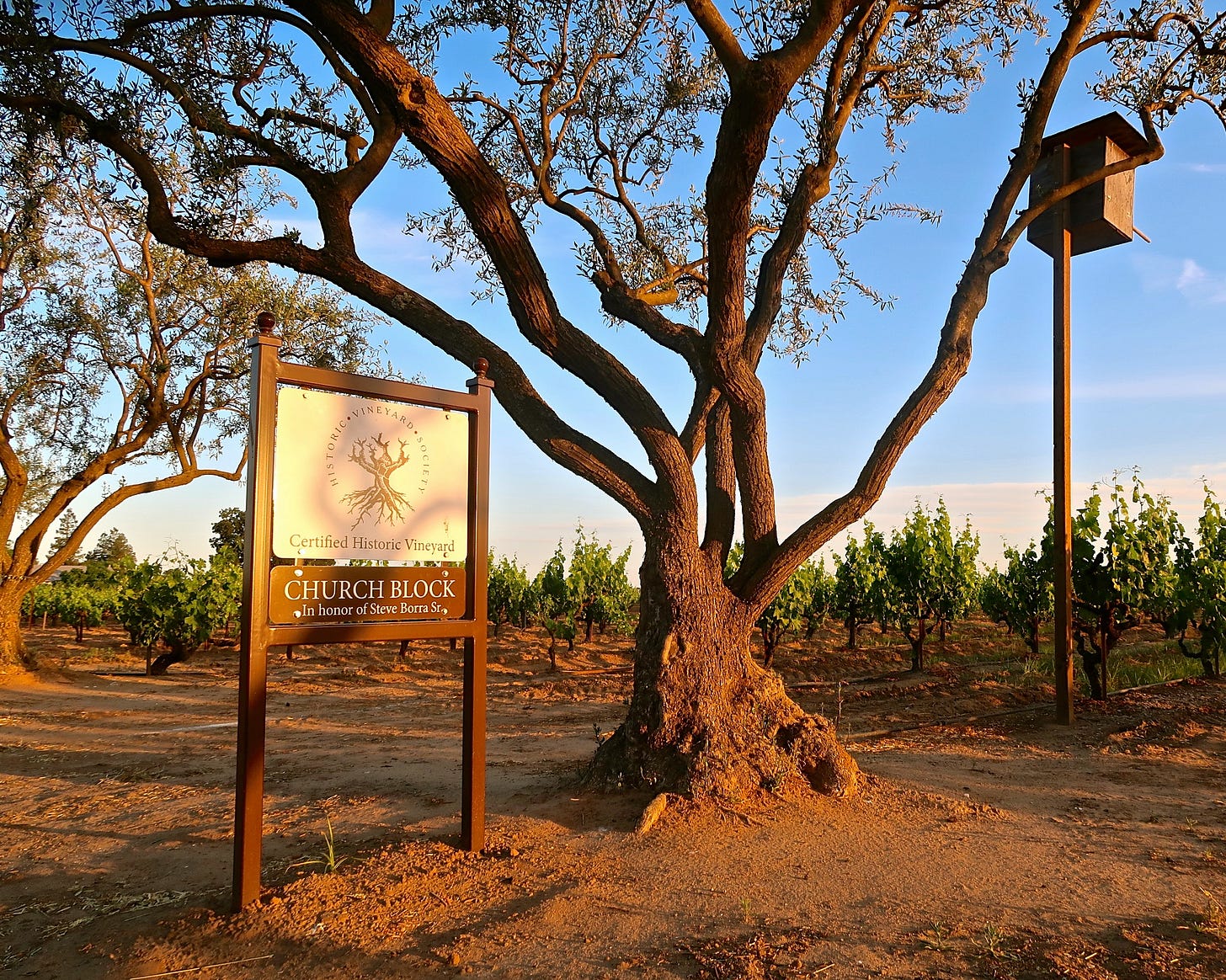
2022 Markus Wine Co., “Ancient Blocks” The Church, Mokelumne River-Lodi—One of the few historic Lodi sites allowing for an old school style of native yeast co-fermented field blending (Carignan, Alicante Bouschet, Petite Sirah and a smattering of Zinfandel); rich, multifaceted nose and layering on the palate, coming across as plush, vivid, lively, unique, upbeat and exciting.
2023 Nalle Winery, “1927 Block,” Nalle Estate Vineyard, Dry Creek Valley Zinfandel—Long the favorite choice for what aficionados used to call “claret” style Zinfandels; picked at moderate Brix while grapes are still at a bright level of natural acidity, in avoidance of the jammy, overripe varietal style dominating the commercial Zinfandel market between the 1980s and early 2000s. The slightly herby, red berry scented fruit is fresh and fragrant in the nose, perky and buoyant on the palate, and as silky as it is grippy in its long, snappy palate-feel.
2023 Once and Future, Belloni Vineyard, Russian River Valley Zinfandel—From the early 1900s mixed block (Zinfandel with Petite Sirah, Carignan, Alicante Bouschet and Mataró) that was, and still remains, a fetish of original Ravenswood founder Joel Peterson: Extravagantly perfumed in its teeming blue and black berryish fruit; ultra-bright acidity lighting up a full yet finely delineated, almost majestic sense of varietal intensity on the palate.
2023 Perlegos Family Wines, Stampede Vineyard, Clements Hills-Lodi Zinfandel—From this brand’s own vineyard, popular among other handcraft producers for its purity of varietal fruit driven by unusually high (by almost all California standards) acidity; this bottling, suitably intense, rich and zesty in its medium weight body, pure in its restrained use of oak (strictly neutral) and focus on specific sense of place.
2023 Perlegos Family Wines, Mule Plane Vineyard, Mokelumne River-Lodi Carignan—Quintessentially “Lodi” in its red berry perfume, vibrant acidity and soft tannin; finishing round, just faintly earthy and pointedly zesty on the palate.
2019 Precedent Wine, Wirz Vineyard, Cienega Valley Riesling—I always thought Precedent owner/winemaker Nathan Kandler makes a contemplative wine out of this growth. The pinpoint delineation may be aided by 40 months aging (who does that?) in a large cask. Whatever the case, this 6-year-old wine is fresh as a daisy and silky textured, electrical with citrus acidity, apple and peach underscored by a leafy herbiness and the vineyard’s characteristic petrol notes; finishing long, intense, and towards the end, with an emerging minerality. The way it’s built, not sure if this wine will ever die.
2022 Precedent Wine, Spenker Ranch, Mokelumne River-Lodi Carignan—Pure “Lodi” in its faintly earthy, soft yet zesty, long, edgy, savory qualities, unperturbed by the extraneous qualities (such as oak or overripeness) which bog down the vast majority of commercial wines, letting a wine lover almost travel back in time when California wines were plainer yet sneaky savory and snappy fresh.
2021 Precedent Wine, Kirschenmann Vineyard, Mokelumne River-Lodi Zinfandel—While this vineyard is normally vivid in spiced red berry perfumes, in May of ’25 this bottling seemed to have retreated into hibernation, coming across as round yet tight fisted, the red berry fragrance peeking out shyly from a nose that is essentially closed. I know this wine too well to judge it in its adolescence. Good wines go through these phases, which is exactly why we like them unadulterated, letting them evolve at their own pace.
2023 Ridge Vineyards, Geyserville Vineyard, Alexander Valley—This iconic Zinfandel specialist’s oldest vineyard-designate, tracing its history as far back as the 1880s; Zinfandel interplanted with Carignan, Petite Sirah and Mataró. The wine, a fragrant mix of the varietal berryishness, both red and black; full bodied yet zippy, with a svelte feel to a dense “wall” of intense varietal fruit, flooding the palate.
2022 Robert Biale Vineyards, Gaudi Carli Vineyard, Calistoga-Napa Valley Barbera—A remarkable wine from a vineyard said to have been planted in 1920. Equally remarkable is that it seems to be the only old vine planting of Barbera remaining in Napa Valley, despite the number of farmers of Italian descent still plying the grape growing trade. Intense with black fruit tinged with a wild mint/pennyroyal-like herbiness; zesty with the varietal’s typically high acidity, yet even keeled and velvet textured, giving a long, lively, dramatic finish.
2022 Robert Biale Vineyards, Pagani Ranch, Sonoma Valley Zinfandel—While this vineyard tends to yield a lusher, plumper, less structured style of the varietal than this winery’s vaunted vineyard-designates grown in Napa Valley, there is a good deal of concentration in the nose of the ’22 Pagani, a site dating back to the early 1900s. Also notable is this bottling’s restrained touch of oak, a departure of sorts for this brand, long an advocate of the influence of French barrels.
2023 Sandlands, Bechthold Vineyard, Lodi Cinsaut—Svelte, bright, soft yet long and palate-ringing in its red fruit profile. You think this wine is plain, then it keeps coming back at you, which is when you realize that its depth is in the comfort that this wine shows in its own skin—or rather, sense of place. It is ancient vine “Cinsaut,” almost the way Gamay noir is part and parcel of, say, crus Beaujolais; authentic, real, phenomenal.
2023 Sandlands, Enz Vineyard, Lime Kiln Valley- San Benito County Mataró—The meaty, earthy quality of this bottling is cut by great acid balance, which also seem to lift this wine’s liqueur-like red fruit fragrance, adding a faintly briny minerality to the nose as well as an almost umami-like savoriness to the palate.
2023 Sandlands, Lodi Red Table Wine (Kirschenmann Vineyard, Bechthold Vineyard and Spenker Ranch)—If you like wines for their intensity, this wine has that in spades. If you prefer wines that retain a sense of restraint, balance and harmony, this wine is all about that as well. That’s the beauty of this three-way blend of Zinfandel, Cinsaut and Carignan. It not only fits in the fragrance and spice of all three grapes, couched in the rounded tannin structure typifying Lodi terroir (particularly the region's sandy soils permitting own-rooted viticulture), allowing for a layering of flavor content giving the wine a top, bottom and substantial middle.
2023 St. Amant Winery, Mohr-Fry Ranches, Mokelumne River-Lodi Zinfandel—Both black and red toned berry fruit qualities are sheathed in mildly earthy/loamy notes, following up in slightly fleshy, rounded medium-full bodied qualities, sticking to the palate with the lingering, unvarnished notes of the earth toned berried fruit.
2023 St. Amant Winery, Marian’s Vineyard, Mokelumne River-Lodi Reserve Zinfandel—The miracle of this wine is that these 1901 own-rooted vines are located just a few feet away from the blocks going into the winery's Mohr-Fry Ranches bottling, yet the profiles are dramatically different; the Marian’s, considerably brighter and high toned, falling more into the red berry spectrum of the varietal, kept pure, fresh and ringing by an impeccably restrained craftsmanship. Anyone, that is to say, who thinks terroir doesn’t exist in California, or that it is just a marketing ploy of the haves vs. have-nots, is an idiot. It is events such as HVS In the City that underscore this plain truth.





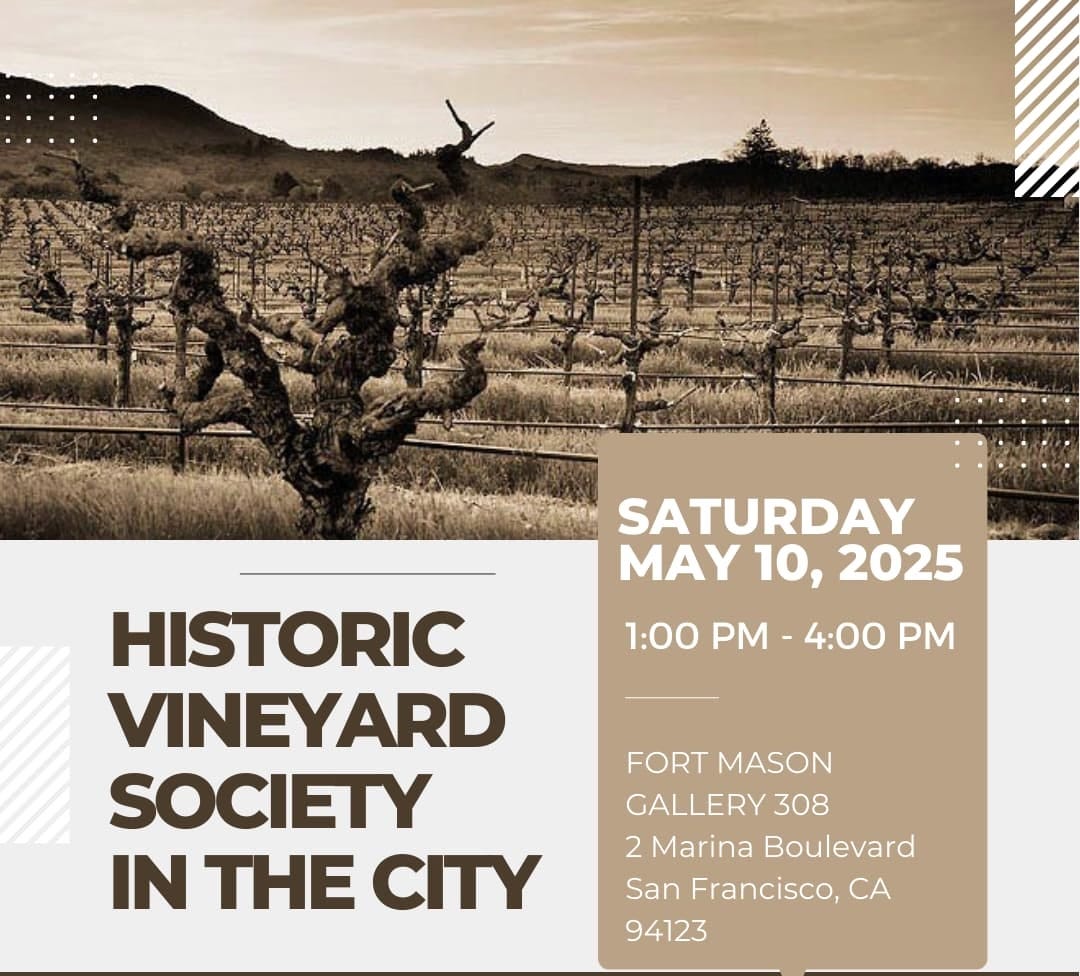
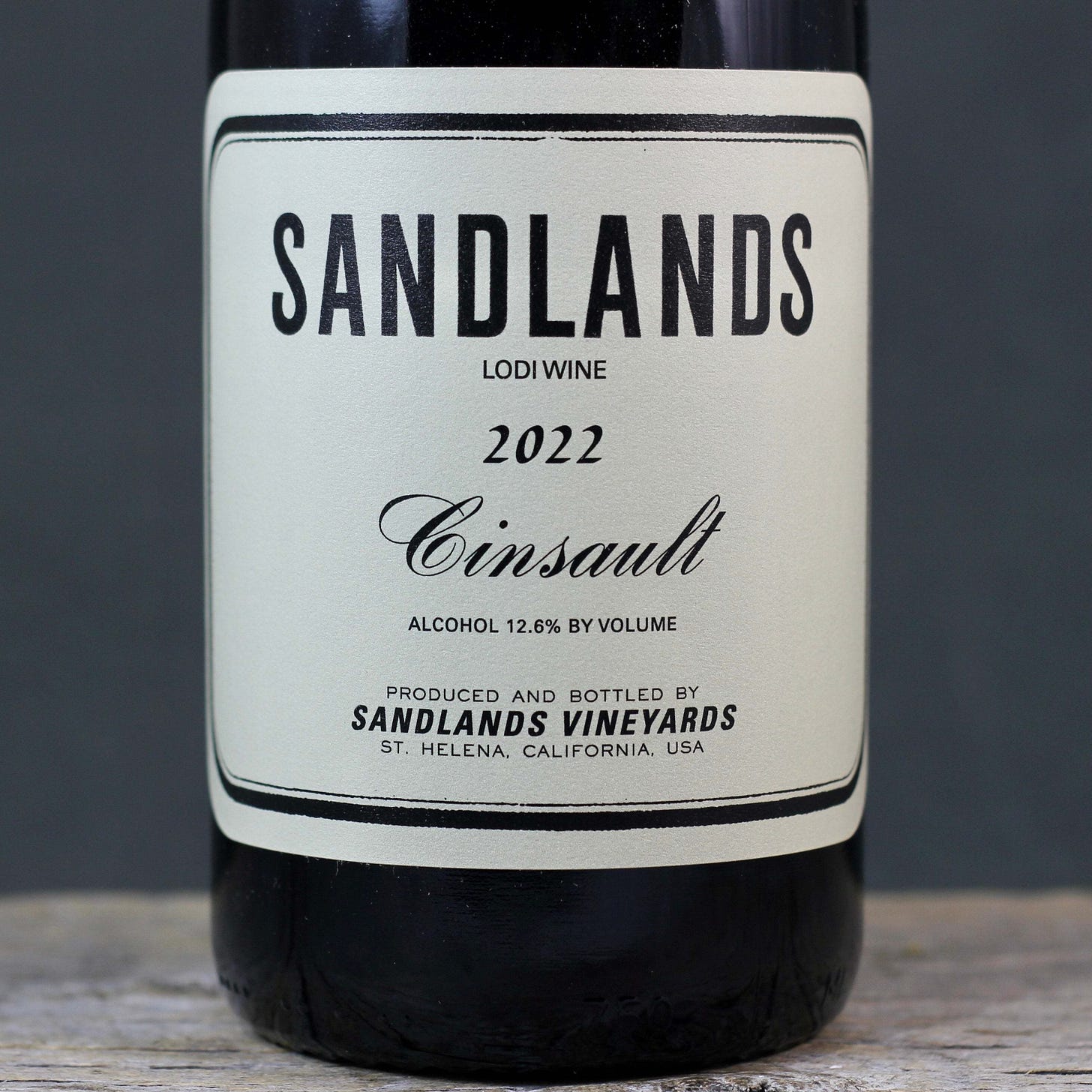

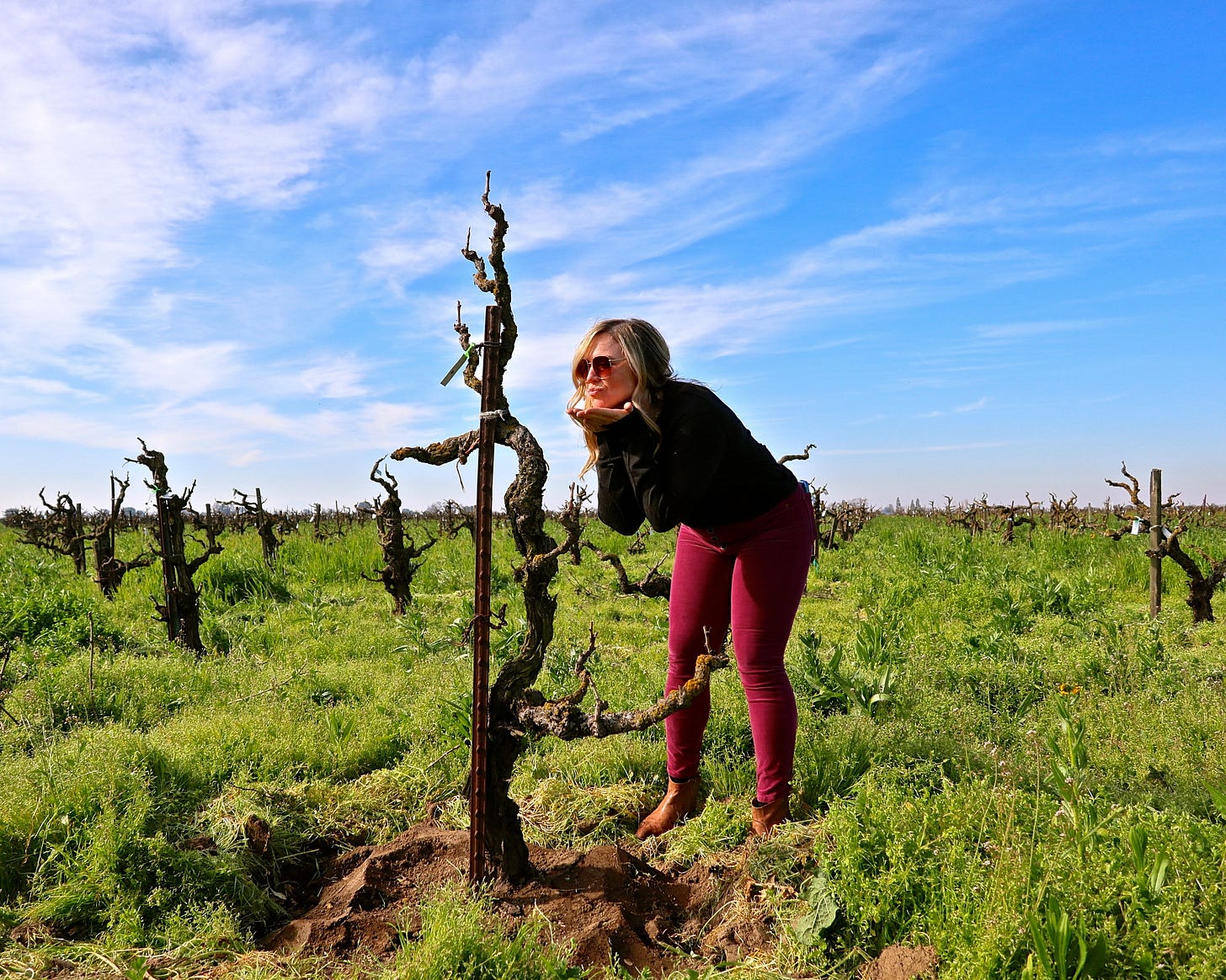

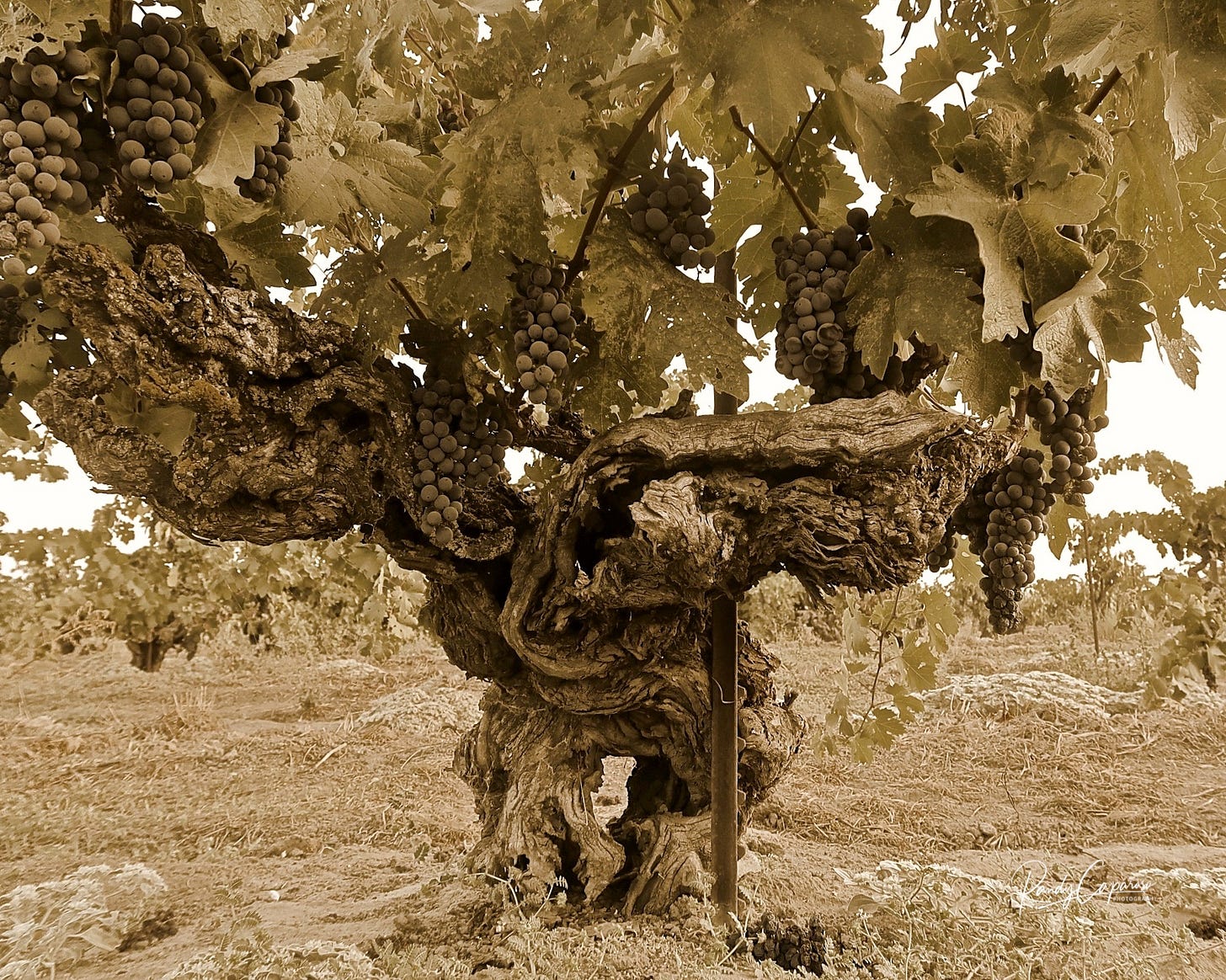
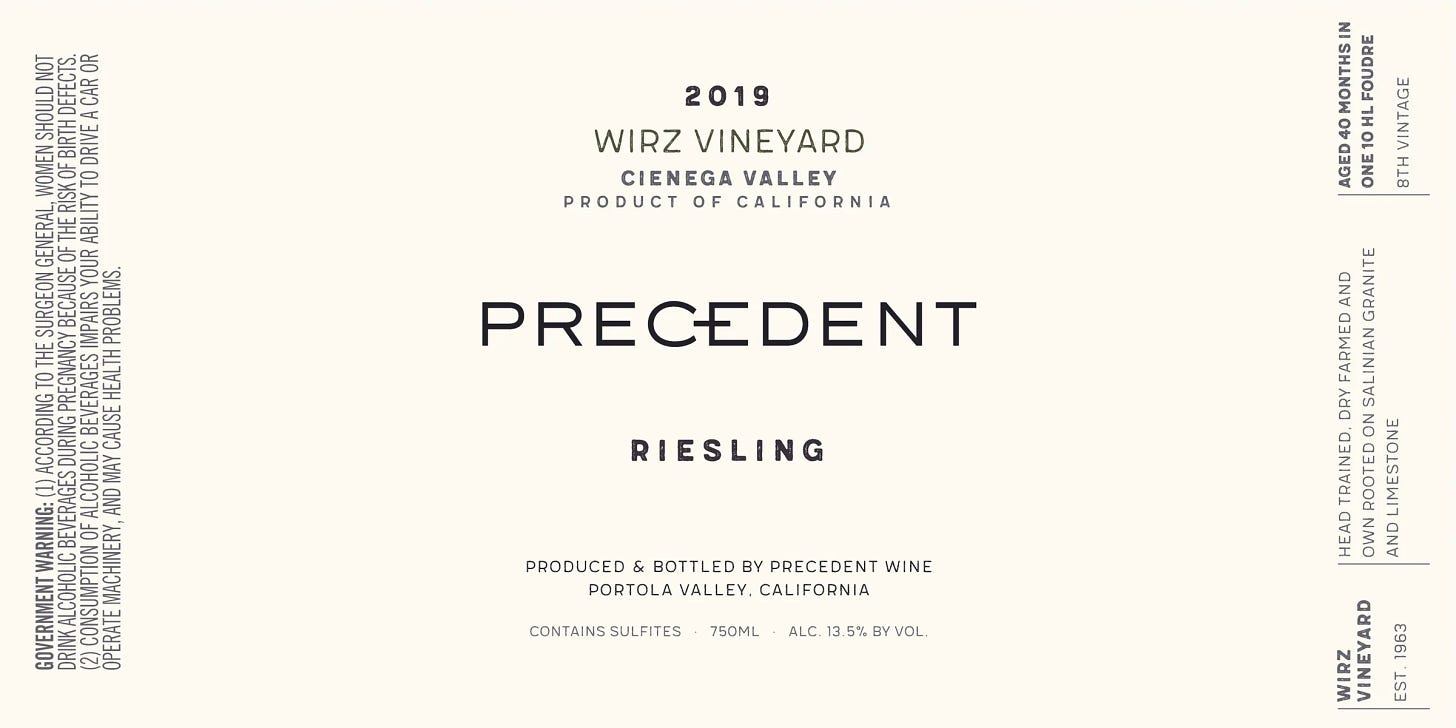
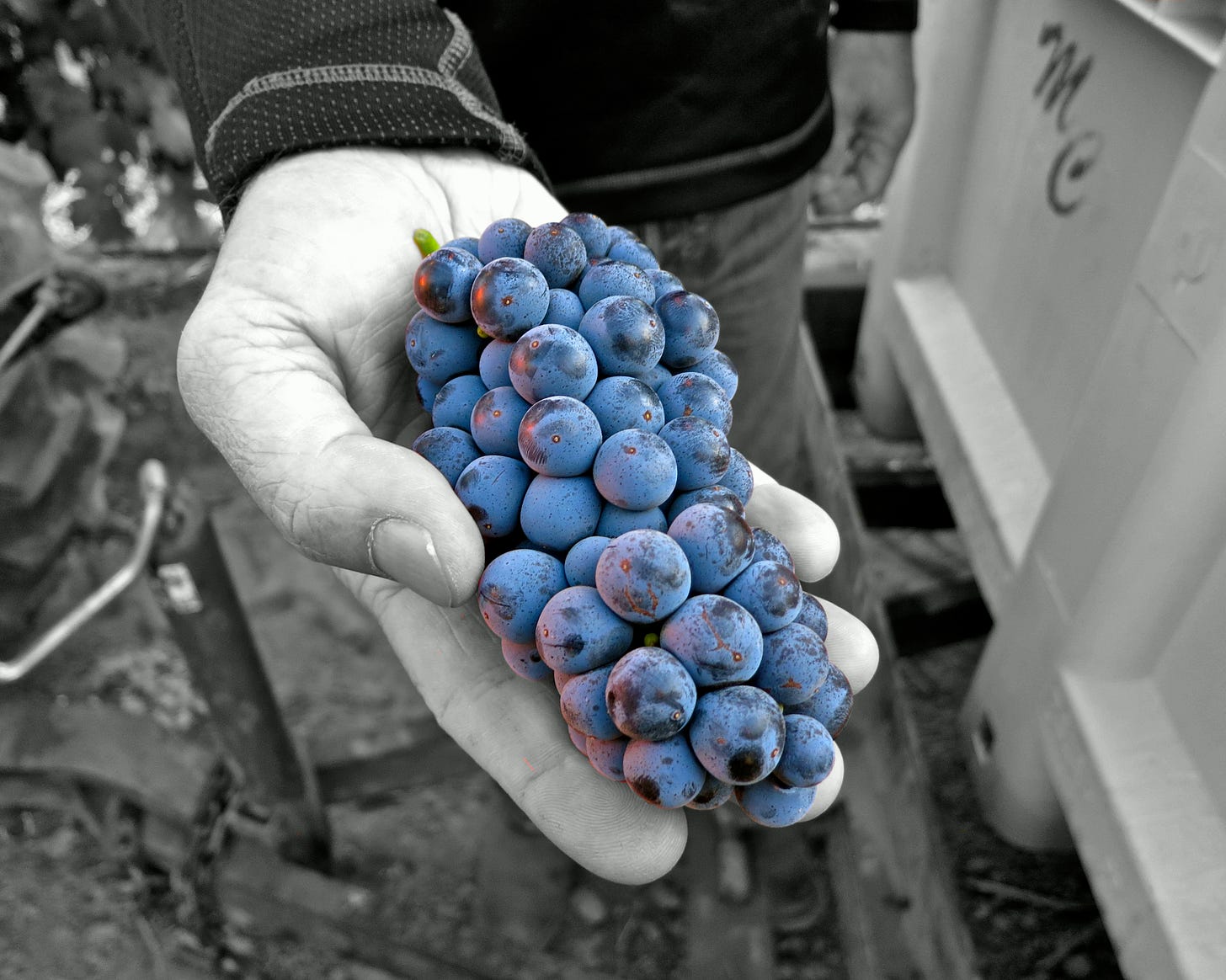
Another excellent review. Love these historic vineyards. Thanks for your insights, Randy!!
Randy, Great write up of the event and to finally get to meet you, a wine legend! My son had a favorite winery that day, Carlisle, and I got to meet Mike, another legend.
The Sandlands 2023 Contra Costa County Carignane was my favorite of the day but every wine I tasted was delicious. Tegan just stole the show for me again like he frequently does.